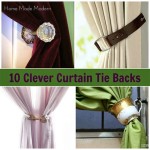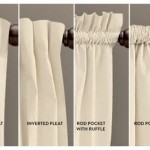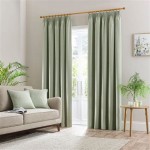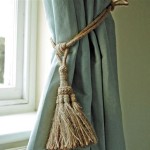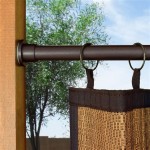Curtains On A Sliding Door: A Comprehensive Guide
Sliding doors, also known as patio doors, offer a seamless transition between indoor and outdoor spaces, allowing natural light to flood the interior and providing convenient access to patios, decks, or gardens. However, these expansive glass panels can also pose challenges related to privacy, light control, and energy efficiency. Curtains offer a versatile and aesthetically pleasing solution to address these concerns. The key to effectively utilizing curtains on a sliding door lies in understanding the various options available, considering the specific functional and stylistic needs of the space, and implementing appropriate installation techniques.
The decision to incorporate curtains on a sliding door necessitates a careful evaluation of several factors. These include the room's overall design aesthetic, the desired level of light blockage, the need for insulation, and the ease of operation. Proper selection and installation can transform a sliding door from a potential liability in terms of privacy and energy loss into a design asset that enhances the comfort and beauty of the home.
Choosing the Right Curtain Style for a Sliding Door
Selecting the appropriate curtain style is paramount to achieving the desired functionality and visual appeal. Several styles are particularly well-suited for sliding doors, each offering distinct advantages.
Panel Curtains: Panel curtains are among the most popular choices for sliding doors due to their simplicity and ease of use. They consist of individual fabric panels that hang vertically from a rod. Typically, two or more panels are used to cover the width of the door. Panel curtains can be easily opened and closed by sliding them along the rod, allowing for flexible light control and privacy. The fabric choice determines the level of light filtration and insulation provided. Lightweight sheer fabrics allow diffused light to enter the room while maintaining a degree of privacy, while heavier, opaque fabrics offer complete blackout capabilities and improved energy efficiency. Consider using tiebacks or curtain rods with magnetic closures to keep panel curtains neatly arranged when open and to prevent them from obstructing the doorway when closed.
Vertical Blinds: While technically not curtains, vertical blinds are a common and practical alternative for sliding doors. They consist of vertical slats that can be tilted to control the amount of light entering the room or completely drawn to one side for unobstructed access. Vertical blinds are available in a variety of materials, including vinyl, fabric, and wood, offering flexibility in terms of style and durability. Vinyl blinds are particularly resistant to moisture and are a good choice for bathrooms or kitchens with sliding doors. Fabric vertical blinds offer a softer look and feel, while wood blinds provide a more luxurious and natural aesthetic. Vertical blinds are relatively easy to install and maintain, and their adjustable slats allow for precise light control.
Sliding Panel Tracks: Sliding panel track systems offer a modern and sophisticated approach to window coverings. These systems consist of multiple fabric panels that slide horizontally along a track. The panels can be customized in terms of size, fabric, and color, allowing for a high degree of design flexibility. Sliding panel tracks are particularly well-suited for large sliding doors, providing a seamless and elegant look. They can be used to create a room divider or to completely block out light and provide privacy. The panels can be easily moved to adjust the amount of light entering the room, and they stack neatly when fully open.
Grommet Curtains: Grommet curtains feature metal rings (grommets) that are attached to the top of the fabric panels. These grommets slide directly onto the curtain rod, creating a clean and contemporary look. Grommet curtains hang in even, uniform folds, making them a visually appealing option for sliding doors. They are easy to install and operate, and the grommets ensure smooth gliding along the rod. Fabric choices for grommet curtains range from lightweight sheers to heavy blackout materials, allowing for customization to suit specific needs. The grommet style lends itself well to both casual and formal interiors.
Rod Pocket Curtains: Rod pocket curtains have a sewn-in pocket at the top through which the curtain rod is inserted. This creates a gathered or ruffled look at the top of the curtain, which can add a touch of traditional charm to a room. Rod pocket curtains are relatively easy to install and are a cost-effective option for sliding doors. However, they may not slide as easily as grommet or tab-top curtains. Fabric choices for rod pocket curtains are diverse, ranging from light and airy to heavy and insulating. They are a versatile choice that can complement a variety of decorating styles.
Key Considerations for Curtain Rods and Hardware
The selection of appropriate curtain rods and hardware is critical for ensuring the proper functioning and aesthetic integration of curtains on a sliding door. The weight of the curtains, the width of the door, and the desired level of functionality all influence the choice of hardware.
Rod Material and Durability: The material of the curtain rod should be chosen based on the weight of the curtains and the overall style of the room. Metal rods, such as steel or wrought iron, are strong and durable and can support heavier fabrics. Wood rods offer a more traditional and rustic look and are suitable for lighter-weight curtains. The finish of the rod should complement the hardware in the room and the color of the curtains. Consider using thicker rods for wider sliding doors to prevent sagging.
Rod Length and Projection: The length of the curtain rod should extend beyond the width of the sliding door to allow the curtains to be fully opened without obstructing the doorway. The projection of the rod (the distance it extends from the wall) should be sufficient to allow the curtains to hang freely without brushing against the door or window frame. Inadequate projection can hinder the smooth operation of the sliding door. Consider using adjustable curtain rod brackets to fine-tune the projection and ensure optimal performance.
Mounting Hardware and Support: The mounting hardware should be appropriate for the type of wall material and the weight of the curtains. Use sturdy brackets that are securely attached to the wall studs to prevent the rod from pulling away. For heavier curtains, consider using additional brackets for added support. Examine the wall material (drywall, plaster, concrete) to ensure the correct type of anchors and screws are used. For example, toggle bolts are often needed for drywall installations to provide adequate support.
Traverse Rods: Traverse rods are specifically designed for opening and closing curtains with a cord or wand. They are particularly useful for heavy curtains or for individuals who have difficulty reaching across the width of the sliding door. Traverse rods allow for smooth and easy operation, making them a practical choice for frequently used sliding doors. They are available in a variety of styles and finishes to complement any decor.
Fabric Selection for Optimal Functionality and Aesthetics
The choice of fabric profoundly impacts the performance and appearance of curtains on a sliding door. The fabric's weight, weave, color, and pattern each contribute to the overall effect.
Light Control and Privacy: The fabric's opacity determines the level of light control and privacy it provides. Sheer fabrics allow diffused light to enter the room while maintaining a degree of privacy, while blackout fabrics block out nearly all light. Semi-sheer fabrics offer a compromise between light and privacy. Consider the direction the sliding door faces and the amount of sunlight it receives when choosing the fabric. Fabrics with tighter weaves generally offer greater privacy than those with looser weaves.
Insulation and Energy Efficiency: Certain fabrics offer superior insulation properties, helping to reduce energy loss through the sliding door. Heavy, tightly woven fabrics, such as velvet or thermal-backed fabrics, provide better insulation than lightweight fabrics. These fabrics can help to keep the room warm in the winter and cool in the summer, reducing energy consumption. Consider adding a thermal lining to existing curtains to improve their insulation performance.
Durability and Maintenance: The durability and ease of maintenance of the fabric are important considerations, especially for sliding doors that are frequently used. Fabrics that are resistant to fading, staining, and wrinkling are ideal for high-traffic areas. Machine-washable fabrics are convenient for easy cleaning, while delicate fabrics may require professional cleaning. Consider the lifestyle and usage patterns of the room when selecting the fabric. For homes with pets or children, durable and stain-resistant fabrics are highly recommended.
Color and Pattern: The color and pattern of the curtains should complement the overall decor of the room. Light colors can help to brighten up a space, while dark colors can create a more dramatic and intimate atmosphere. Patterns can add visual interest and texture to the room. Consider using solid-colored curtains for a more minimalist look, or patterned curtains to add a touch of personality. Avoid using excessively busy patterns in small spaces, as they can make the room feel cluttered. Coordinate the curtain color with other elements in the room, such as the walls, furniture, and accessories, to create a cohesive and harmonious design.
By carefully considering these various factors, it is possible to select and install curtains on a sliding door that not only enhance the beauty of the home but also improve its functionality and energy efficiency. This level of attention to detail will ensure a comfortable and aesthetically pleasing living space.

25 Best Patio Door Curtain Ideas Designs Window Dressing

8 Best Sliding Glass Door Curtain Ideas The Shade

8 Best Sliding Glass Door Curtain Ideas The Shade

Patio Glass Door Curtains Ideas Photos Tips Spiffy Spools

10 Patio Door Curtain Ideas You Ll Love

Essential Guide To Furnishing Patio Doors And Xl Windows

Are Curtains Or Blinds Better For Sliding Doors Full Guide

Are Curtains Or Blinds Better For Sliding Doors Amanda Katherine Interiors

8 Best Sliding Glass Door Curtain Ideas The Shade

Patio Door Curtain Ideas For Diffe Needs And Tastes


